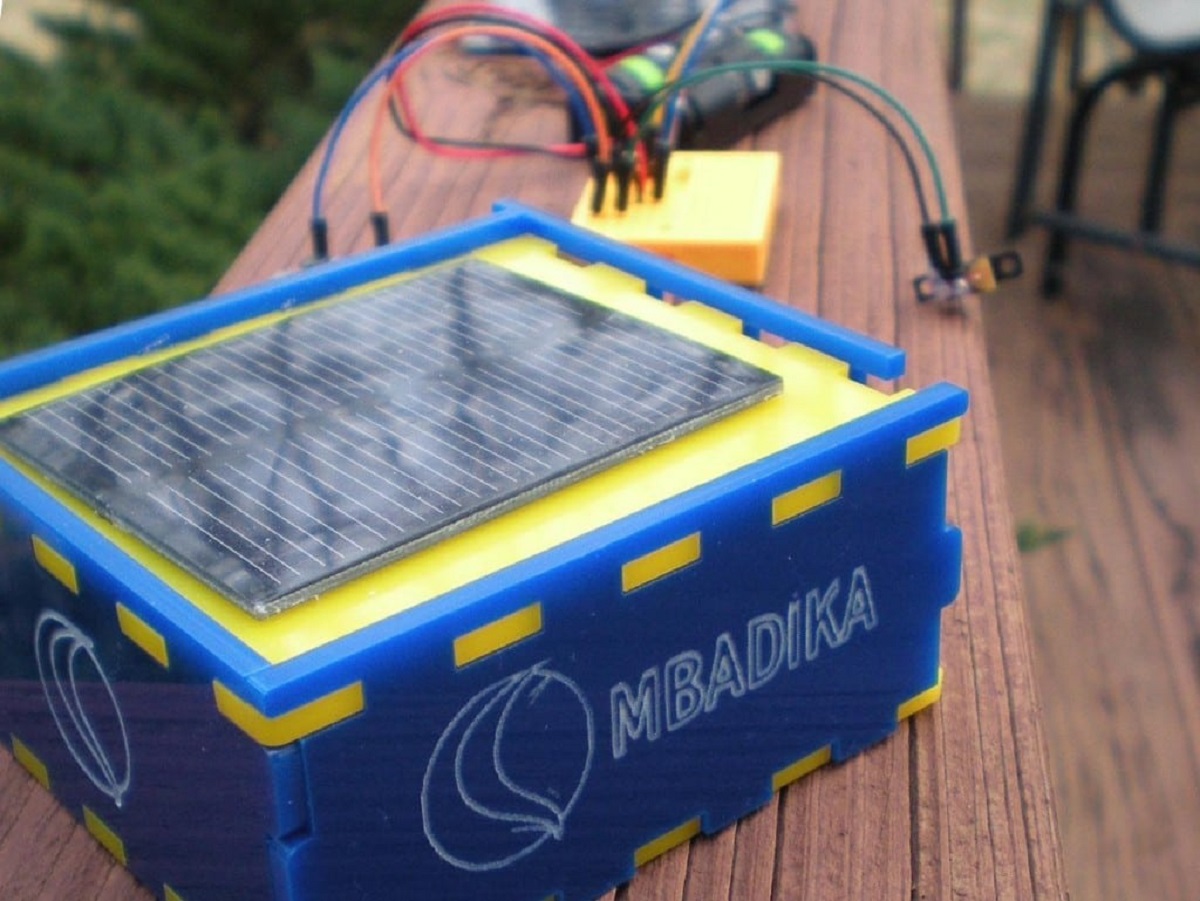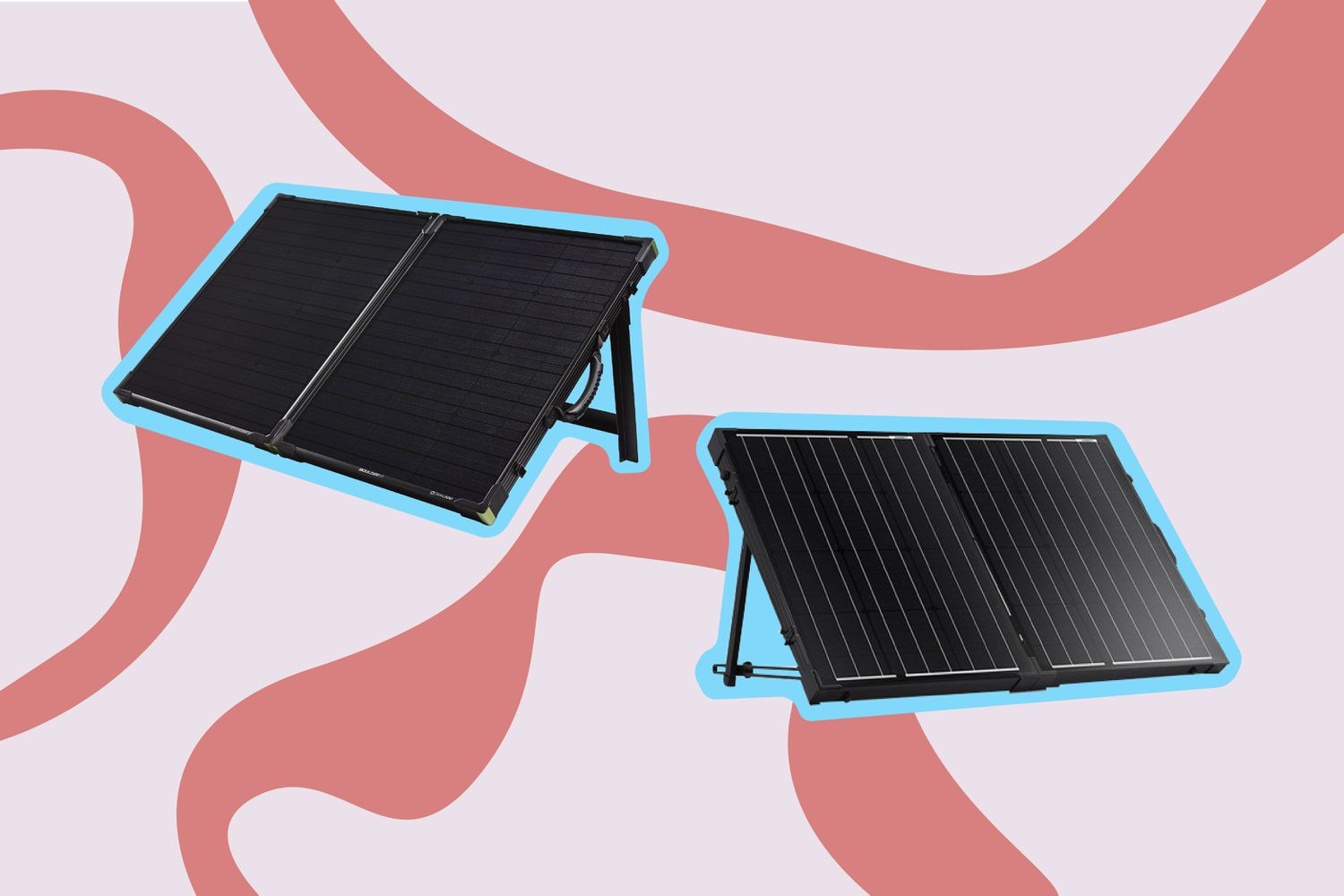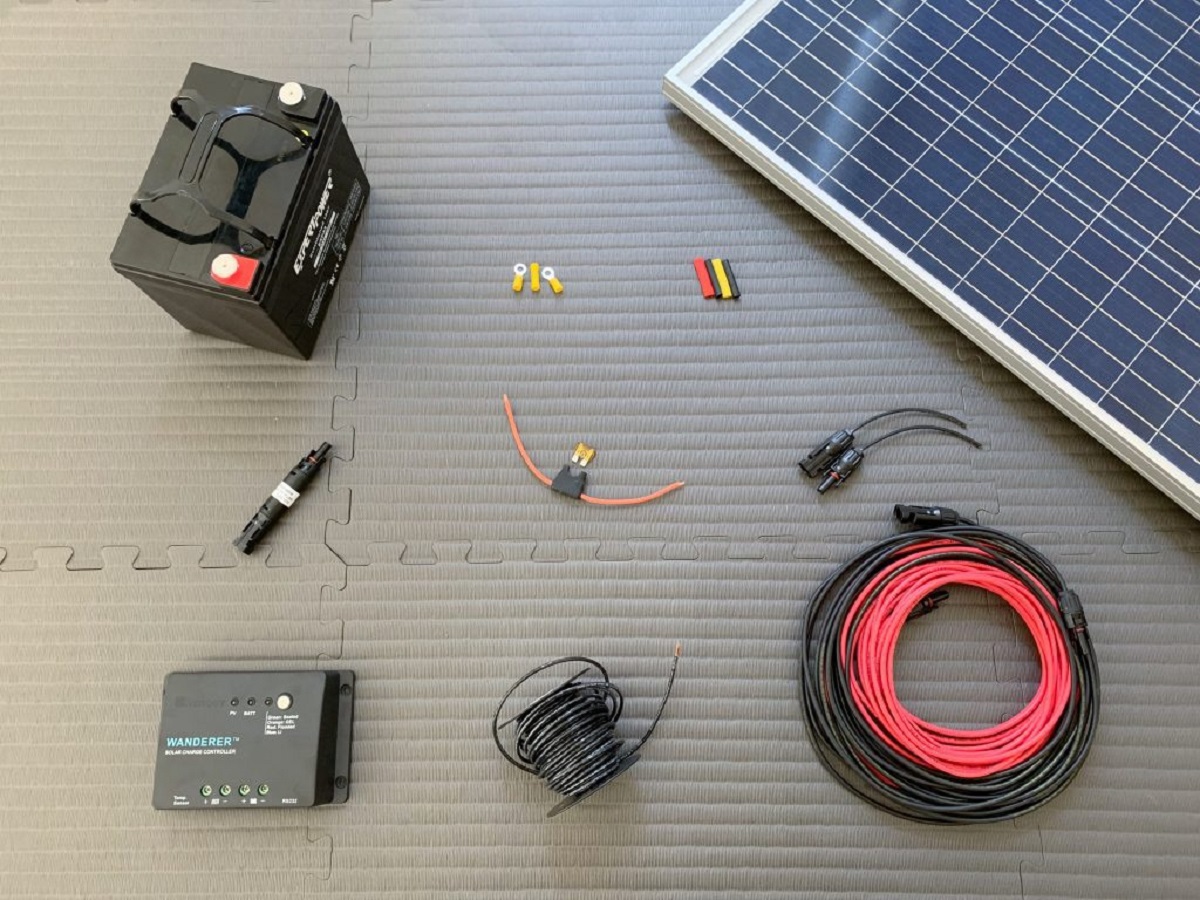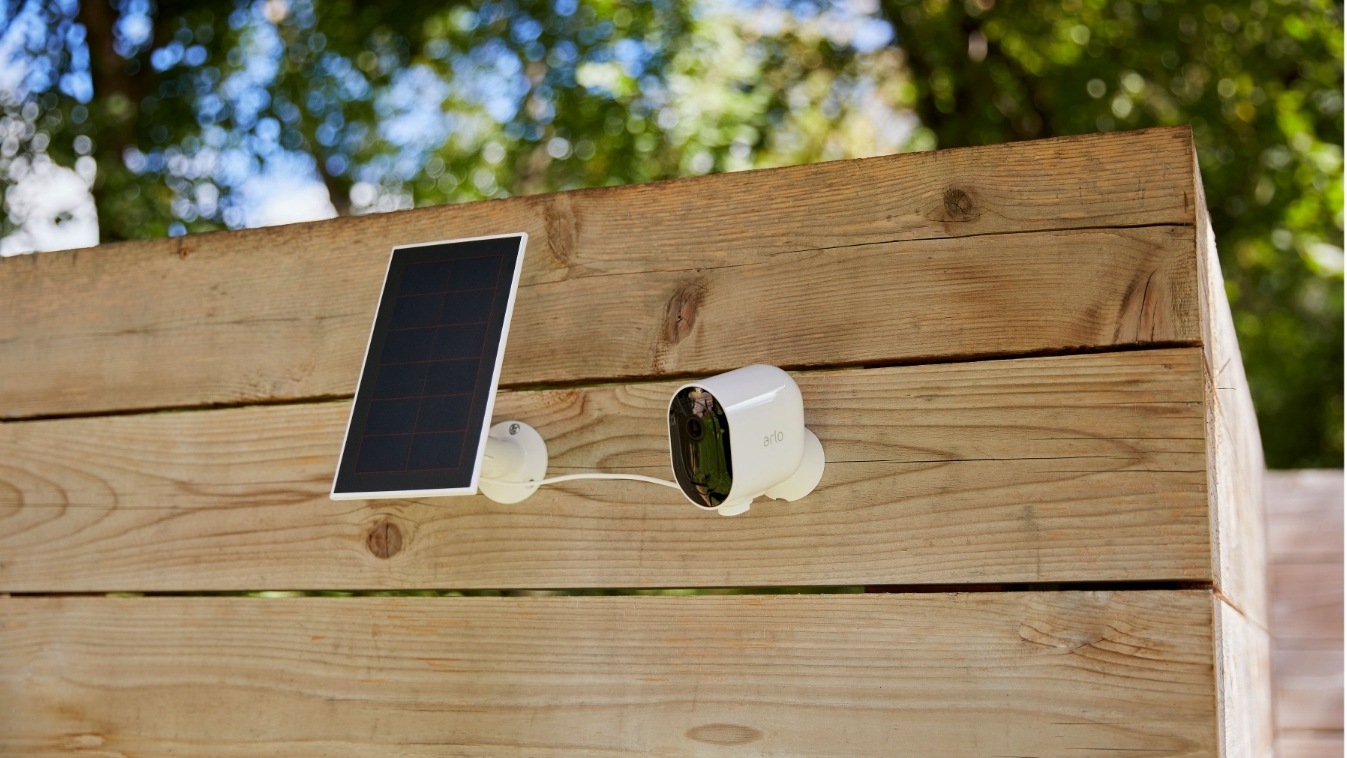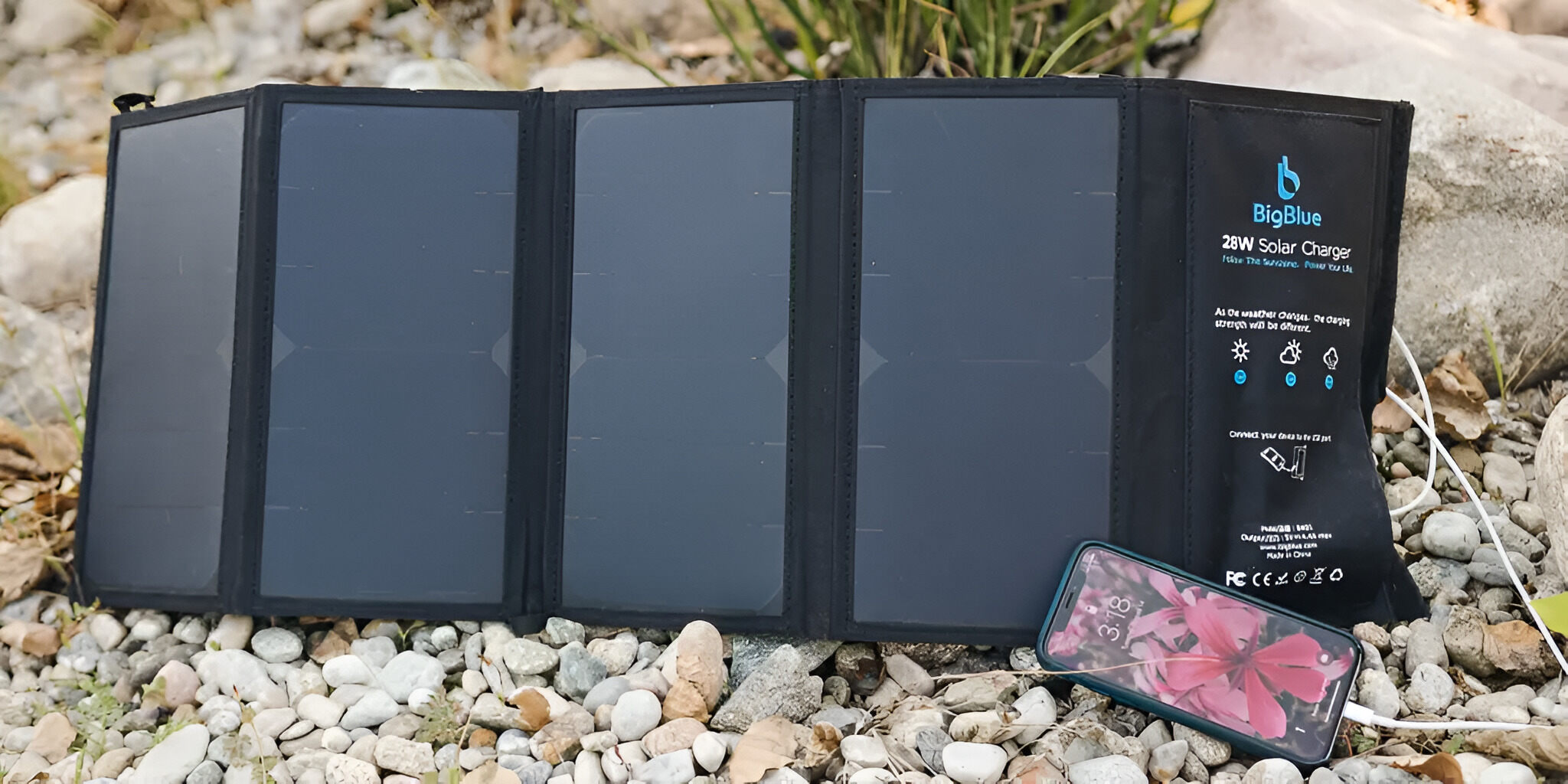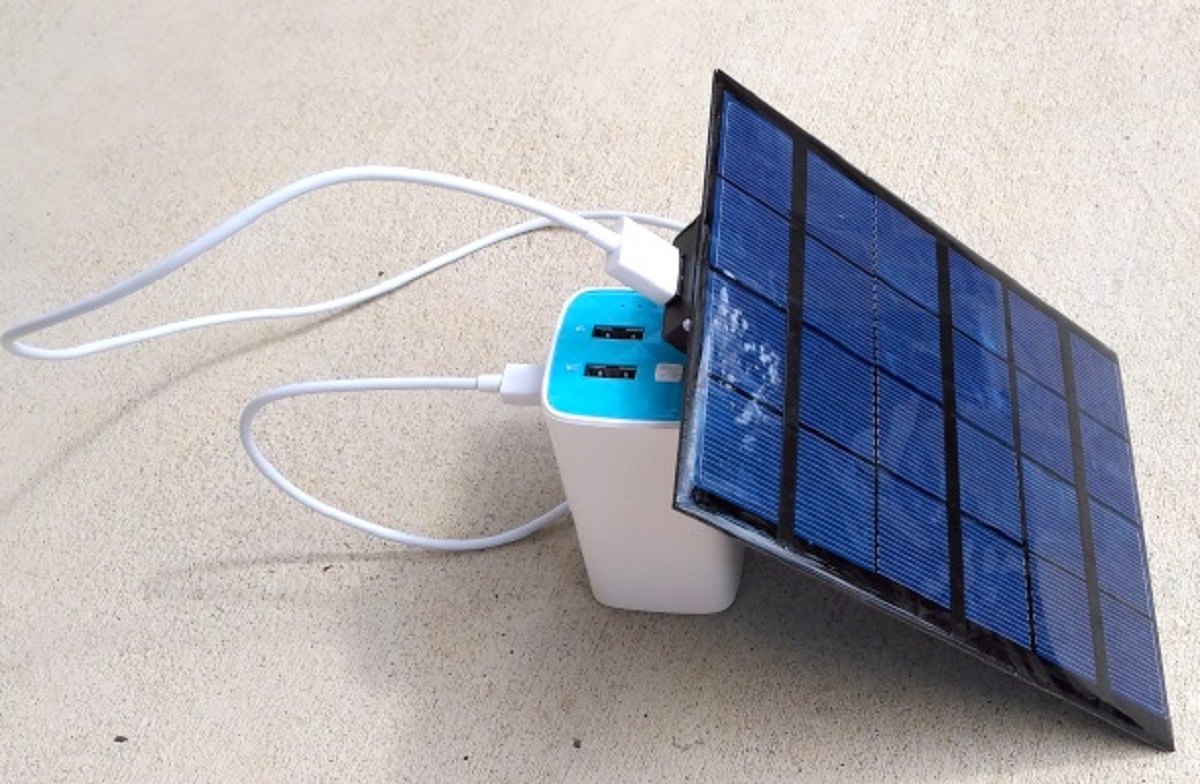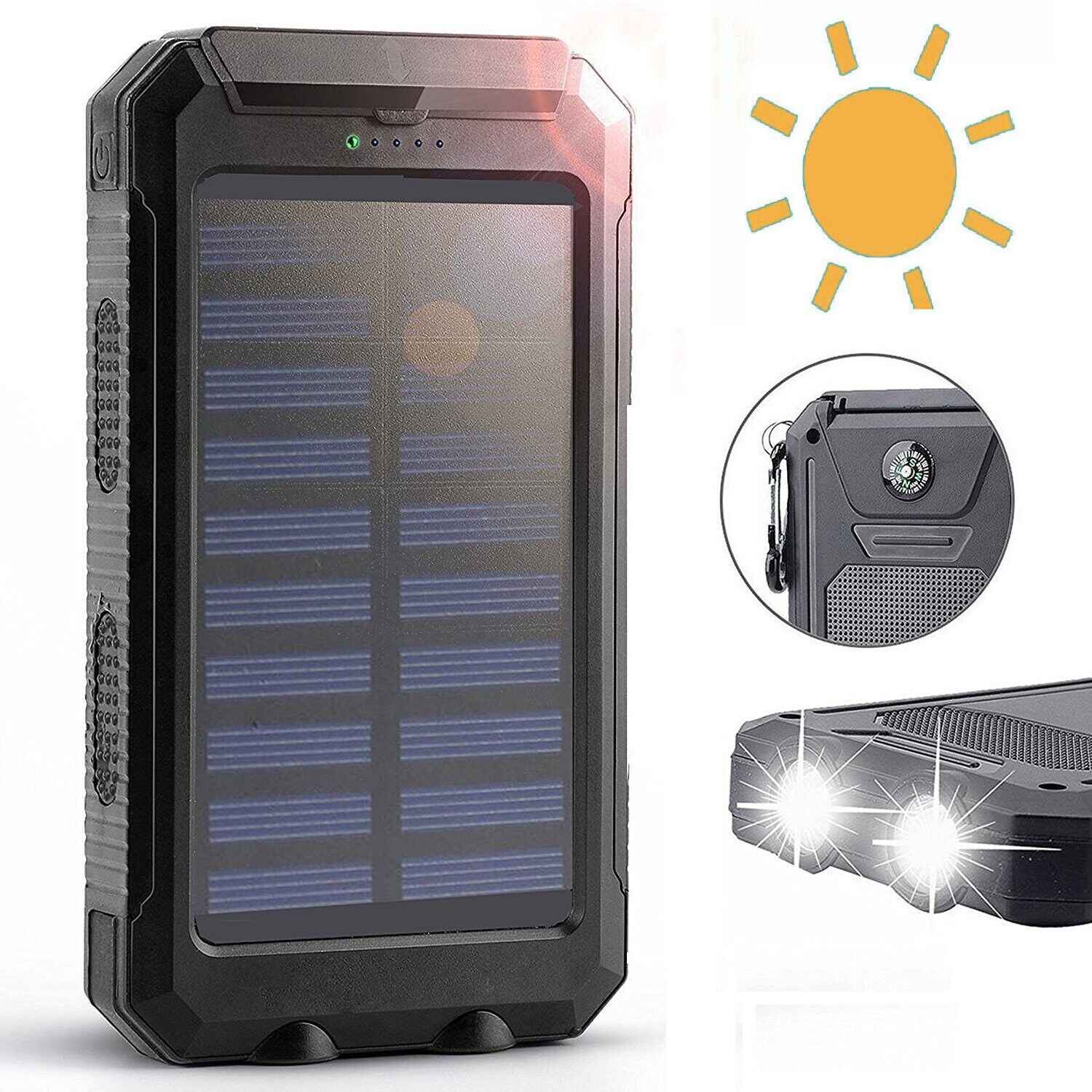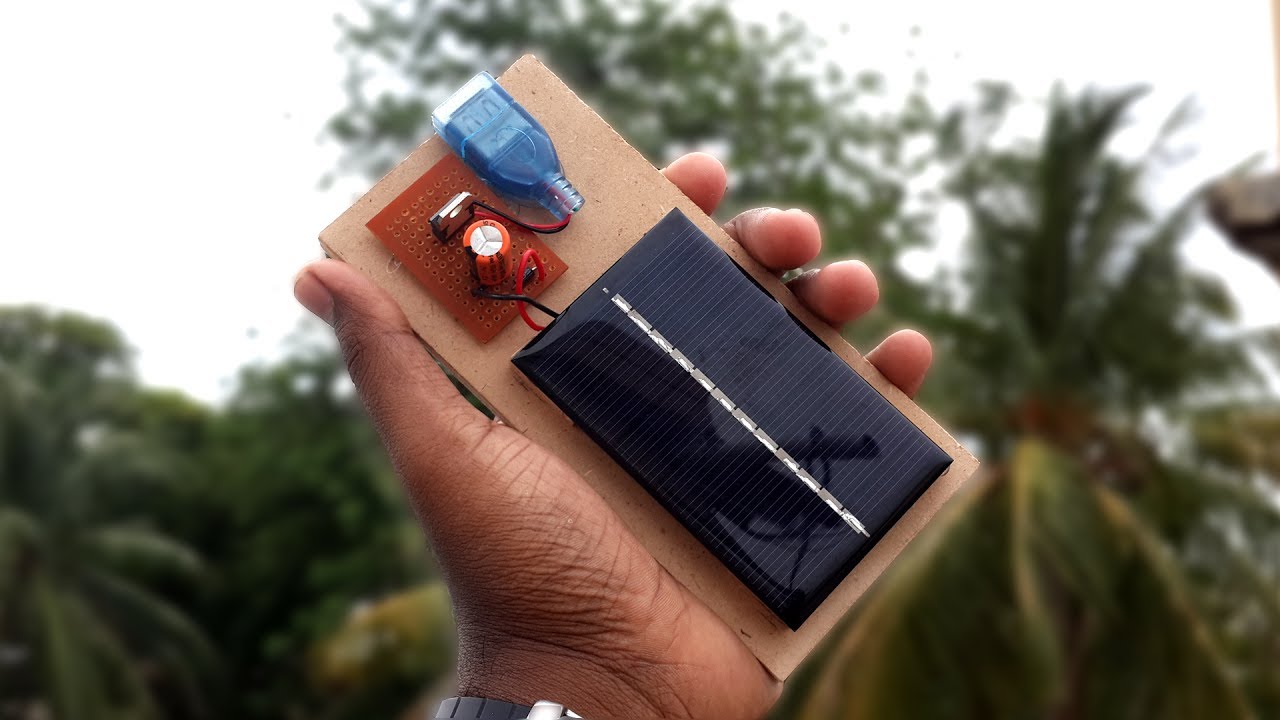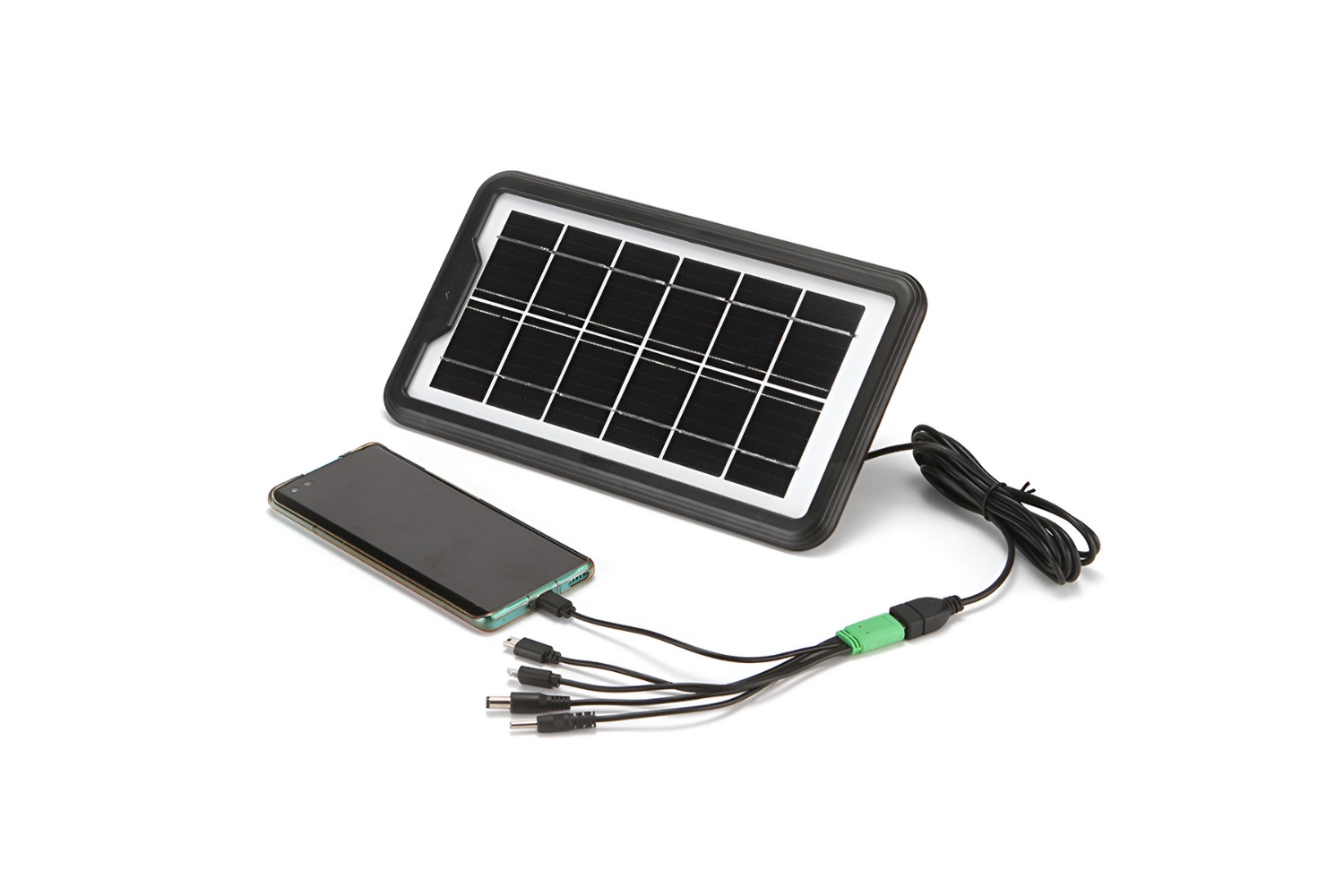Introduction
Welcome to the world of solar panel chargers! As our reliance on electronic devices continues to grow, the need for efficient and eco-friendly charging solutions becomes increasingly important. Solar panel chargers offer a fantastic way to harness the power of the sun to charge your devices on the go, making them an ideal choice for outdoor enthusiasts, travelers, and environmentally conscious individuals.
In this article, we will dive into the world of solar panel chargers and explore everything you need to know to make them work for you. Whether you are new to the concept or looking to upgrade your current charger, this guide will provide you with valuable information to help you make informed decisions.
Not only are solar panel chargers a sustainable option, but they also offer a range of benefits that make them a worthy investment. We will discuss these benefits in detail, helping you understand why solar chargers are a smart choice for your charging needs. Additionally, we will explore the basics of solar panel chargers, including how they work and the different types available in the market.
Choosing the right solar panel charger can sometimes be overwhelming, given the wide variety of options available. However, fear not! We will walk you through the process of selecting the perfect charger that aligns with your needs and preferences. From power output to compatibility with different devices, we will cover the important factors you should consider before making a purchase.
Once you have your solar panel charger in hand, we will guide you through the setup process to ensure that you can start charging your devices hassle-free. We will also provide helpful tips for effectively maintaining and troubleshooting your charger, so you can get the most out of it in the long run.
To wrap things up, we will share some valuable tips to help you maximize the efficiency of your solar panel charger, ensuring that you can enjoy a seamless charging experience wherever you go. From positioning your charger to optimizing sunlight exposure, these tips will help you make the most of your solar-powered charging solution.
So, without further ado, let’s dive into the exciting world of solar panel chargers and discover how they can revolutionize the way you charge your devices. Get ready to embrace the power of the sun and embark on an eco-friendly charging journey!
Benefits of Using Solar Panel Chargers
Solar panel chargers offer a multitude of benefits that make them a compelling choice for anyone in need of a reliable and eco-friendly charging solution. Let’s explore some of the key advantages of using solar panel chargers:
- Environmentally friendly: One of the biggest advantages of solar panel chargers is their eco-friendliness. By harnessing the power of the sun, these chargers produce clean and renewable energy, reducing our reliance on fossil fuels and minimizing carbon emissions. Using a solar panel charger is an excellent way to contribute to a greener planet and reduce your carbon footprint.
- Cost-effective: While the initial investment in a solar panel charger may be higher compared to traditional chargers, it can save you money in the long run. Once you have purchased a solar panel charger, you can charge your devices using free solar energy, eliminating the need to rely on electricity from the grid or disposable batteries. This can result in significant savings on your energy bills and reduce the need for constantly buying new batteries.
- Portability: Solar panel chargers are designed with portability in mind. Whether you’re camping, hiking, or simply spending time outdoors, a solar panel charger allows you to keep your devices charged without the need for a power outlet. They are lightweight, compact, and easy to carry, making them a great companion for all your outdoor adventures.
- Versatility: Solar panel chargers can charge a wide range of devices, including smartphones, tablets, cameras, GPS devices, and more. With the availability of various connector types and USB ports, you can easily charge multiple devices simultaneously. This versatility makes solar panel chargers suitable for everyday use, as well as for emergencies and situations where access to electricity is limited.
- Resilience: Traditional charging methods can be unreliable during power outages or in remote areas. Solar panel chargers, on the other hand, provide a reliable source of energy wherever there is sunlight. This makes them an essential addition to emergency kits and a must-have for those who frequently venture into off-grid locations.
These are just a few examples of the many benefits that solar panel chargers offer. From their positive impact on the environment to their cost-effectiveness and portability, solar panel chargers are a smart and sustainable choice for all your charging needs.
Understanding the Basics of Solar Panel Chargers
Before diving into the world of solar panel chargers, it’s essential to understand the basics of how they work and the different components that make up these innovative devices. By gaining a solid understanding of the fundamentals, you’ll be better equipped to make informed decisions when choosing and using your solar panel charger.
At the core of a solar panel charger is, of course, the solar panel itself. The solar panel consists of photovoltaic (PV) cells that convert sunlight into electricity through the photovoltaic effect. When sunlight hits the cells, it excites the electrons and generates an electric current. This current is then collected and stored in a battery or used to charge your devices directly.
Most solar panel chargers are equipped with built-in charge controllers. These controllers ensure that the energy generated by the solar panel is appropriately managed and optimized for charging your devices safely. They protect against overcharging, over-discharging, and other potential issues, extending the lifespan of both the solar panel and the connected devices.
Solar panel chargers are available in various wattages, which determine the charging speed and the amount of energy they can generate. Higher wattage chargers can generate more power and charge devices faster, but they are generally larger and bulkier. It’s essential to consider your power requirements and the intended use of the charger when selecting the appropriate wattage.
Additionally, many solar panel chargers feature multiple output ports and connectors. These allow you to charge different devices simultaneously and cater to a wide range of charging needs. Whether you have a smartphone, tablet, or camera, you can find a solar panel charger with the right connectors to charge your devices efficiently.
It’s worth noting that solar panel chargers rely on sunlight to generate electricity. While they can still provide some charging capabilities under cloudy conditions or indoor lighting, direct sunlight is the most efficient and reliable source of power. It’s important to position your solar panel charger in a location where it can receive maximum sunlight exposure throughout the day for optimal charging performance.
Understanding the basics of solar panel chargers will help you make informed decisions when selecting the right charger for your needs and ensure that you can utilize it to its full potential. With this knowledge, you can confidently embark on your solar charging journey and enjoy the benefits of sustainable and mobile device charging.
Choosing the Right Solar Panel Charger for Your Needs
With so many solar panel chargers available in the market, it’s important to choose the right one that fits your specific needs and preferences. To help you make an informed decision, consider the following factors when selecting a solar panel charger:
- Power Output: The power output of a solar panel charger determines how quickly it can charge your devices. Consider the wattage and current output of the charger to ensure it aligns with your charging requirements. Higher wattage chargers can charge devices faster, but they may also be larger and heavier.
- Portability: If you plan to use your solar panel charger while on the go or during outdoor activities, portability is a crucial factor. Look for a charger that is lightweight, compact, and easy to carry. Some chargers come with a built-in carrying case or have foldable designs to enhance portability.
- Compatibility: Check the compatibility of the charger with your devices. Ensure it has the right outputs and connectors for your smartphones, tablets, cameras, or other electronic devices. Some chargers offer universal compatibility, while others may require specific adapters or cables.
- Battery Capacity: If your solar panel charger comes with a built-in battery, consider the capacity of the battery. A higher capacity allows for more energy storage, which can be useful when charging devices during periods of low sunlight or at night. However, keep in mind that larger battery capacity can also increase the size and weight of the charger.
- Durability: Look for a solar panel charger that is built to withstand outdoor conditions. Opt for chargers with rugged designs, water resistance, and sturdy construction, as they will be more reliable and durable in various environmental conditions.
- Reviews and Reputation: Before making a purchase, read reviews and seek recommendations from other users. Checking the reputation of the brand and the charger model will give you insights into its performance, reliability, and customer satisfaction.
Once you have considered these factors, you will have a better idea of the type of solar panel charger that suits your needs. Whether you need a portable charger for backpacking, a powerful charger for long trips, or a versatile charger for everyday use, there is a solar panel charger out there to meet your specific requirements.
Remember, choosing the right solar panel charger is not just about the features and specifications; it’s also about finding a charger that fits your lifestyle and fulfills your charging needs. By investing time in evaluating these factors, you can ensure that you select a solar panel charger that will provide you with reliable and sustainable charging for years to come.
Setting Up Your Solar Panel Charger
Setting up your solar panel charger properly is essential to ensure optimal charging performance. Here are the steps to follow when setting up your solar panel charger:
- Choose the right location: Find a location that receives ample sunlight throughout the day. Ideally, place your solar panel charger in direct sunlight, away from any obstructions such as trees or buildings, to maximize its efficiency. Ensure that the solar panel is facing the sun at the correct angle for your geographical location.
- Connect the charger to your devices: Most solar panel chargers come with built-in USB ports or specific connectors for various devices. Connect your devices to the charger using the appropriate cables or adapters. Ensure that the connections are secure to avoid interruptions during the charging process.
- Monitor the charging process: Keep an eye on the charging status of your devices. Many chargers have LED indicators that show when your devices are charging or when they are fully charged. This will help you avoid overcharging your devices and prolong their battery lifespan.
- Adjust as needed: Throughout the day, the angle and position of the sun may change. Periodically adjust the positioning of your solar panel charger to ensure that it continues to receive direct sunlight. This may involve repositioning the charger or using adjustable stands or mounts to optimize sunlight exposure.
- Use during the right time of day: Solar panel chargers work most efficiently when the sun is at its strongest. Charge your devices during the peak hours of sunlight to maximize the charging speed and effectiveness of the charger. This will ensure that you extract the most energy from the sun and have your devices ready for use when you need them.
By following these steps, you will be able to set up your solar panel charger effectively and ensure that it functions optimally. Remember to check the manufacturer’s instructions for any specific setup requirements or recommendations related to your charger model.
Setting up your solar panel charger is a straightforward process, and with a little attention to detail, you can enjoy the benefits of renewable energy-powered charging for your devices. Get ready to harness the power of the sun and embrace the convenience and sustainability of solar charging!
Maintaining and Troubleshooting Your Solar Panel Charger
To ensure the longevity and optimal performance of your solar panel charger, it’s important to properly maintain and troubleshoot any issues that may arise. Here are some maintenance tips and troubleshooting techniques to keep your charger in excellent condition:
- Keep your solar panel clean: Regularly clean the surface of your solar panel to remove dirt, dust, and debris. Use a soft, non-abrasive cloth or sponge with mild soap and water. Avoid using harsh chemicals or abrasive materials, as they can damage the solar panel. Keeping the panel clean will help maximize its efficiency and energy output.
- Inspect for damages: Periodically inspect your solar panel charger for any signs of physical damage or wear. Check for loose or damaged cables, connectors, and ports. If you notice any issues, address them promptly to prevent further damage or reduced charging performance.
- Store your charger properly: When not in use, store your solar panel charger in a dry and protected place. Avoid exposing it to extreme temperatures, moisture, or direct sunlight for extended periods. Proper storage will help prolong the lifespan of your charger.
- Troubleshooting common issues: If your solar panel charger is not functioning as expected, troubleshoot the issue to identify and resolve the problem. Check the connections between the charger and your devices to ensure they are secure. Verify that you are placing the charger in an area with sufficient sunlight exposure. If the charger has a built-in battery, confirm that it is charged adequately. If the problem persists, consult the manufacturer’s instructions or seek professional assistance.
- Seek professional help if needed: If you encounter any persistent or complex issues with your solar panel charger, it’s best to seek help from a professional technician or contact the manufacturer’s customer support. They will have the expertise to diagnose and resolve any technical problems you may encounter.
By following these maintenance steps and troubleshooting techniques, you can ensure that your solar panel charger remains in excellent working condition and provides reliable charging for your devices. Remember that proper care and maintenance will not only extend the lifespan of your charger but also enhance its overall performance.
Enjoy the convenience and sustainability of solar charging by keeping your charger well-maintained and addressing any issues that may arise. With a little effort and attention, you can continue to harness the power of the sun and enjoy efficient charging wherever you go.
Tips for Maximizing Your Solar Panel Charger’s Efficiency
To get the most out of your solar panel charger and maximize its charging efficiency, consider implementing the following tips and tricks:
- Optimize sunlight exposure: Position your solar panel charger to receive direct sunlight as much as possible. Clear any obstructions, such as trees or buildings, that may cast shadows on the charger. Adjust the angle and orientation of the solar panel throughout the day to ensure it captures the most sunlight.
- Charge during peak sunlight hours: Solar panel chargers work most effectively during the sunniest parts of the day. Charge your devices when the sun is at its strongest and avoid charging them during early morning or late afternoon when the sunlight intensity is lower.
- Avoid extreme temperatures: Extreme heat or cold can impact the performance of your solar panel charger. Avoid exposing it to extreme temperatures and operate it within the recommended temperature range specified by the manufacturer. High temperatures can cause the charger to overheat, while very cold temperatures may reduce its efficiency.
- Keep your devices in low-power mode: To conserve energy and extend the battery life of your devices, enable low-power mode or airplane mode when charging them with your solar panel charger. This reduces the power consumption of your devices and allows for more efficient charging.
- Utilize energy-saving features: Some solar panel chargers come with energy-saving features, such as auto-shutoff or power-saving modes. Take advantage of these features to optimize the charging process and minimize energy waste.
- Monitor charging progress: Regularly check the charging progress of your devices to ensure they are charging properly. Disconnect devices once they are fully charged to avoid overcharging, which can deplete the charger’s energy unnecessarily.
- Invest in a power bank: If your solar panel charger has a built-in battery, consider investing in a power bank. A power bank allows you to store the energy generated by the solar panel for later use, ensuring that you have power available even when sunlight is not readily accessible.
- Stay informed about weather conditions: Keep an eye on weather forecasts and plan your charging accordingly. If you anticipate cloudy or rainy days, try to fully charge your devices beforehand or have a backup power source available.
By implementing these tips, you can optimize the efficiency of your solar panel charger and make the most of the available sunlight. As a result, you can enjoy faster and more reliable charging for your devices, whether you’re on an outdoor adventure or simply looking for a sustainable charging solution at home.
Remember that every little adjustment and consideration can contribute to the overall efficiency of your solar panel charger. Embrace these tips and make solar charging an integral part of your eco-friendly lifestyle.
Conclusion
Solar panel chargers provide a sustainable and convenient way to charge your devices using the power of the sun. They offer numerous benefits, including environmental friendliness, cost-effectiveness, portability, versatility, and resilience. By understanding the basics of solar panel chargers, choosing the right one for your needs, setting it up correctly, and properly maintaining it, you can enjoy efficient and eco-friendly charging wherever you go.
Remember to position your solar panel charger in direct sunlight, use it during peak sunlight hours, and maintain it by keeping it clean and inspecting it for damages. Troubleshoot any issues that may arise and seek professional help if needed. To maximize the efficiency of your solar panel charger, optimize sunlight exposure, charge devices during the sunniest times, avoid extreme temperatures, and utilize energy-saving features.
With these tips and tricks, you can make the most of your solar panel charger and embrace the power of solar energy to charge your devices sustainably. By reducing your reliance on traditional electricity and disposable batteries, you contribute to a greener planet and save money in the long run. So, go ahead and harness the sun’s energy, embark on your eco-friendly charging journey, and enjoy the countless benefits that solar panel chargers have to offer.







